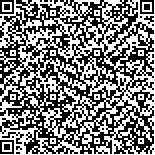下载中心
优秀审稿专家
优秀论文
相关链接
摘要

地理信息分类体系之间的语义不一致性,被认为是影响地理信息系统实现在语义层次上信息共享的最大障碍.首先,本文在阐述中国地理信息分类体系之间参照模式的基础上,提出了一种基于语义的地理信息分类体系对比分析方法.其次,对中国现行的几种地理信息标准分类体系进行了详细的对比分析.最后,为中国地理信息分类体系的编制和修订提出了一些建议.
关键词:
地理信息分类体系 语义分析 地理信息系统 基于语义 地理 信息分类体系 体系对比 分析 Schemes Classification Geographic Analysis 修订 信息标准 方法 模式 中国 阐述 障碍 信息共享 语义层次 信息系统 影响Semantic inconsistencybetween geographicalclassification schemes isbelieved as themostseriousproblem for\nheterogeneous geographical information systems to mi plement semantic information sharing. Since 1980’s four standard\nChinese geographical classification schemes have been constructed, .i e. Classification and Codes for the NationalLand\nInformation(GB/T13923-1992), Classification and Codes for the Features 1∶500, 1∶1000, 1∶2000 TopographicMaps\n(GB/T14804-1993), Classification and Codes for the Features 1∶5000, 1∶10000, 1∶25000, 1∶50000, 1∶100000\nTopographicMaps(GB/T15660-1995), andClassification andCodes for theFeatures1∶500,1∶1000,1∶2000Topographic\nMaps for Urban Fundamental Geographical Information System ( CJJ100-2004 ). Individual special geographical\nclassification schemes are normally constructed for specific geographical information systems. GB/T13923-1992 is a\ngeneral and basic standard geographical classification scheme. All other geographical classification schemes are suggested\nto be compatiblewithGB/T13923-1992.\nGeographical information systems are usually inconsistent in terms of their content and geographical classification\nschemes. A single geographical conceptmight be represented in differentways so that geographical information systems\ncannot initially mi plement semantic information sharing. Semantic mapping is considered as a tool to state semantic\nrelations between entities belonging to different classification schemes. It has been proven to most effectively resolve\nsemantic heterogeneity between geographical classification schemes. Although intellectualmethods can attain good effects,\nthere are still problems if there are insufficient tmi e, money and experts.\nThis paper firstly describes amethod for identification of entities from different geographical classification schemes.\nBased on semantic relations, parameters for the qualitative and quantitative analysis of their semantic consistency are\ndefined. And then the basic architectures and coding measures of standard geographical classification schemes are\ncompared and analyzed. The resultsof the quantitative comparison betweenGB/T13923-1992 and other standard schemes\nshow thatGB/14803-1993 and GB/T 13923-1992 have the best semantic consistency. The results of the quantitative\ncomparison between common-scale and different-scale standard schemes show thatGB/14803-1993 and CJJ100-2004 have\ntheworst semantic consistency, but GB/T15660-1995 and GB/14803-1993 can achieve better semantic consistency.\nFinally, some suggestions are given for construction and modification of Chinese standard geographical classification\nschemes. For example, standard schemes should define identical main classes and item names, authorized semantic\nmapping of standard geographical information schemes should be published, and ontologies may be able to solve the\nproblem of semantic inconsistency between photographical geographical information schemes naturally and economically.

